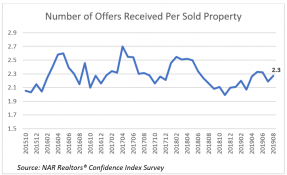In the small commercial market (less than $2.5 M) that most REALTORS® do business in, REALTORS® reported strong sales and leasing activity for multifamily and industrial properties.
NAR has identified vacation home counties, the least expensive and most expensive areas, and the income profile of buyers who can afford to purchase a vacation home.
This blog post looks at the buying power of the population and the spending behavior by race/ethnicity, as well as explore the psychology of spending money and making financial decisions.
In all states except North Dakota and Illinois, more respondents reported an increase than a decrease in buyer traffic, with “very strong” homebuying activity in Idaho, Wyoming, and Wisconsin.
The “Inclusionary Zoning Implementation Amendment Act of 2006” helped improve Washington, DC housing affordability requiring that new housing developments include units that are affordable for low-income households.
Amid tight supply, home prices are still appreciating in many areas, with home prices rising at a faster pace in less expensive metro areas and rising at a slower pace or even falling in more expensive metro areas.
At the national level, housing affordability is up from last month and up from a year ago. The effective 30-year fixed mortgage rate was down from last month at 3.62% this July, and down nearly one percentage point compared to 4.75% a year ago.
Looking at data from the 2019 Member Profile we recognize REALTORS® for their hard work and successes this Labor Day.
What has changed over the past seventeen years, with the increase in technology used in the business of real estate?
Eighty percent of respondents reported that home prices remained constant or rose in July 2019 compared to levels one year ago (86 percent in July 2018).
Search Economists' Outlook




























